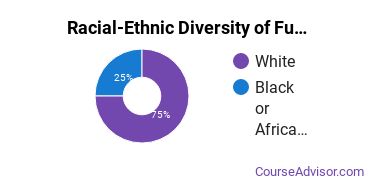Funeral & Mortuary Science at Mid-America College of Funeral Service
If you are interested in studying funeral & mortuary science, you may want to check out the program at Mid-America College of Funeral Service. The following information will help you decide if it is a good fit for you.Mid-America College is located in Jeffersonville, Indiana and approximately 92 students attend the school each year.
Want to know more about the career opportunities in this field? Check out the Careers in Funeral & Mortuary Science section at the bottom of this page.
Mid-America College Funeral & Mortuary Science Degrees Available
- Associate’s Degree in Mortuary Science
- Bachelor’s Degree in Mortuary Science
Mid-America College Funeral & Mortuary Science Rankings
The mortuary science major at Mid-America College is not ranked on College Factual’s Best Colleges and Universities for Funeral & Mortuary Science. This could be for a number of reasons, such as not having enough data on the major or school to make an accurate assessment of its quality.
Mortuary Science Student Demographics at Mid-America College
Take a look at the following statistics related to the make-up of the mortuary science majors at Mid-America College of Funeral Service.
Mid-America College Funeral & Mortuary Science Associate’s Program

The majority of those who receive an associate's degree in mortuary science at Mid-America College are white. Around 76% fell into this category, which is below average for this degree.
The following table and chart show the race/ethnicity for students who recently graduated from Mid-America College of Funeral Service with a associate's in mortuary science.

| Race/Ethnicity | Number of Students |
|---|---|
| Asian | 0 |
| Black or African American | 7 |
| Hispanic or Latino | 0 |
| White | 57 |
| International Students | 0 |
| Other Races/Ethnicities | 11 |
Mid-America College Funeral & Mortuary Science Bachelor’s Program

About 63% of those who receive a bachelor's degree in mortuary science at Mid-America College are white. This is typical for this degree on the nationwide level.
The following table and chart show the race/ethnicity for students who recently graduated from Mid-America College of Funeral Service with a bachelor's in mortuary science.

| Race/Ethnicity | Number of Students |
|---|---|
| Asian | 0 |
| Black or African American | 5 |
| Hispanic or Latino | 0 |
| White | 10 |
| International Students | 0 |
| Other Races/Ethnicities | 1 |
Concentrations Within Funeral & Mortuary Science
Funeral & Mortuary Science majors may want to concentrate their studies in one of these areas. The table shows all degrees awarded in this field awarded for all degree levels at Mid-America College of Funeral Service. A concentration may not be available for your level.
| Concentration | Annual Degrees Awarded |
|---|---|
| General Funeral Service & Mortuary Science | 44 |
| Funeral Direction/Service | 17 |
Related Majors
Careers That Mortuary Science Grads May Go Into
A degree in mortuary science can lead to the following careers. Since job numbers and average salaries can vary by geographic location, we have only included the numbers for IN, the home state for Mid-America College of Funeral Service.
| Occupation | Jobs in IN | Average Salary in IN |
|---|---|---|
| Morticians, Undertakers, and Funeral Directors | 740 | $53,640 |
| Funeral Service Managers | 460 | $73,390 |
| Embalmers | 100 | $35,880 |
References
*The racial-ethnic minorities count is calculated by taking the total number of students and subtracting white students, international students, and students whose race/ethnicity was unknown. This number is then divided by the total number of students at the school to obtain the racial-ethnic minorities percentage.
More about our data sources and methodologies.
